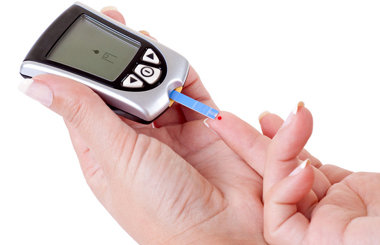Type 2 diabetes is sweeping in the United States as more and more people are diagnosed with the condition. Good blood sugar control requires good blood sugar testing. Testing regularly shows how diet, exercise, and other factors affect your blood sugar. Many people check their blood glucose levels at home. However, making small mistakes when you test your blood sugar levels can lead to inaccurate results.
7 Common Errors to Avoid When Checking Blood Sugar Levels

- Not cleaning your hands before testing: Even if your hand don’t look dirty, wash your hands cleanly before you check your blood, or else you may end up with an incorrect result. Residue from food or medication can affect the results. It is reported that blood from unwashed hands had a greater than 10 percent difference in blood sugar levels between the first drop and the second drop. So wash your hands with soap and warm water and dry them thoroughly just before testing.
- Testing your fingertip and using same finger all the time: Testing on the center of fingertip is a bit painful because the nerves are located in the pad of the fingertips. It’s better to test on the side of the fingertip. Also, you should switch the finger you use to test. Testing at same spot can cause calluses to develop. If your blood sugar readings are generally consistent, try testing on an alternate site, such as the palm of your hand.
- Squeezing your finger: While testing, if you don’t get enough blood from the spot, avoid squeezing your finger for enough blood. Squeezing the finger can release some interstitial fluid rather than blood which may lead to unreliable readings.
- Misusing lancets and test strips: For accurate results, lancets and testing strips that match your meter. Don’t use old test strips or strips that are nearing expiration date. Some meters will reject expired strips and some can give inaccurate readings. Make sure your testing strips have been properly stored and have not expired.
- Not getting into a routine: The best way to manage you diabetes is by routine testing of your blood glucose levels.
- Testing at wrong time: Testing soon after eating can give you readings that are probably too high. It’s better to check with your doctor about when and how often you should be testing your blood sugar or test fasting blood sugar, and test every time before you eat. Wait two hours after eating to get the best reading.
- Not recording your sugar level: Testing the blood sugar and viewing the results is not enough. You may need to make changes in your medication dosage or lifestyle to manage your diabetes. The best way to understand your results and know what raises your blood sugar levels is to track them. If your level is too high, your physician can change your prescription.